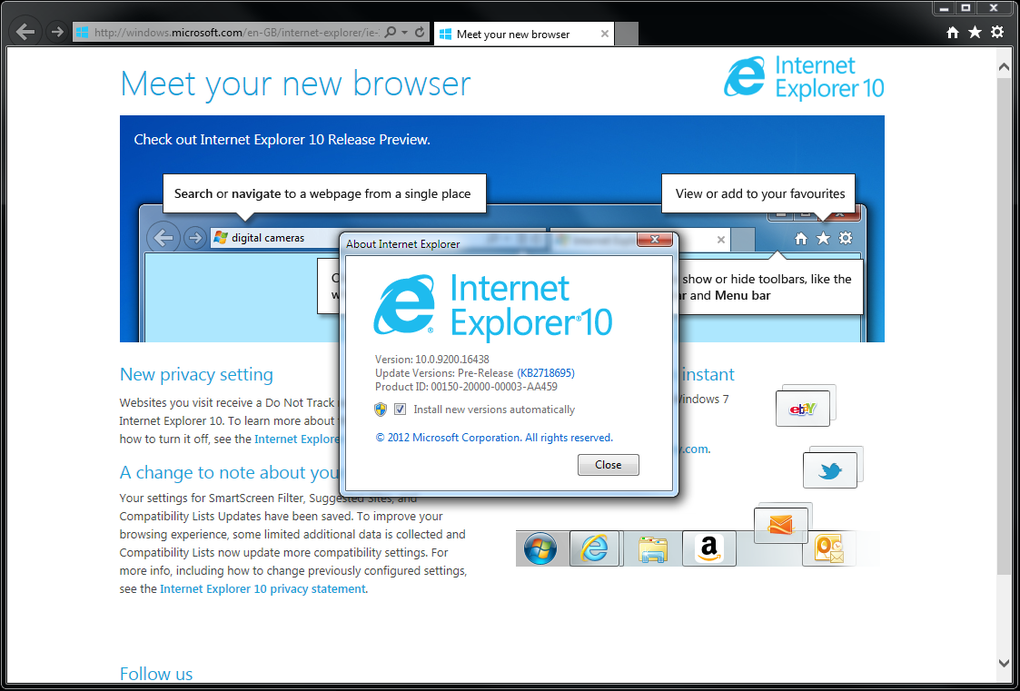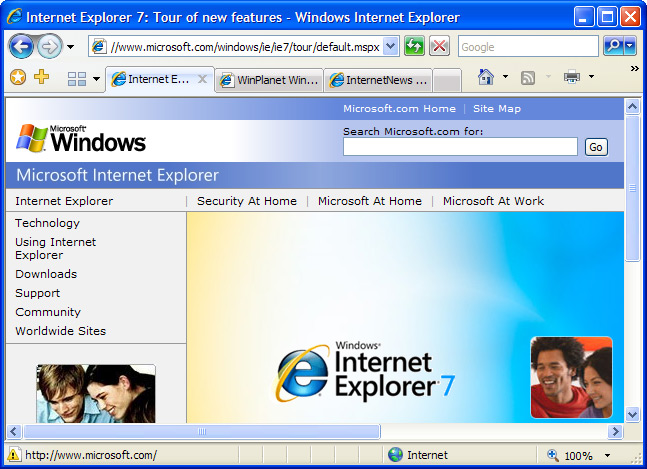

- #WINDOWS INTERNET EXPLORER 7 FOR WINDOWS 2000 INSTALL#
- #WINDOWS INTERNET EXPLORER 7 FOR WINDOWS 2000 UPGRADE#
- #WINDOWS INTERNET EXPLORER 7 FOR WINDOWS 2000 WINDOWS 7#
- #WINDOWS INTERNET EXPLORER 7 FOR WINDOWS 2000 PROFESSIONAL#
#WINDOWS INTERNET EXPLORER 7 FOR WINDOWS 2000 WINDOWS 7#
Using Default Programs - Windows 7 and Vista
#WINDOWS INTERNET EXPLORER 7 FOR WINDOWS 2000 INSTALL#
As a workaround, install Firefox 2.0.0.x (available here) and make it the default browser, then open SeaMonkey and set it as the default. If another browser has been set as the default browser, including Internet Explorer 7, Firefox 3, or Opera 9, you may be unable to reset SeaMonkey as the default. If Firefox already thinks that it is default, exit Firefox completely, go to "Start Menu -> Run" and enter this into the text box:įirefox.exe -silent -setDefaultBrowser Reset SeaMonkey as the default
#WINDOWS INTERNET EXPLORER 7 FOR WINDOWS 2000 UPGRADE#
To resolve the problem, either uninstall the test version of IE7 (which restores IE6) or upgrade Internet Explorer. In some pre-release (test) versions of Internet Explorer 7, hyperlinks in Outlook or Outlook Express mail messages do not work unless IE7 is the default browser.

Use the options or preference settings within your Mozilla browser as shown above, to set Firefox or Mozilla Suite/SeaMonkey as the default browser. ThunderBrowse will launch the link in an external browser. Additionally, you can also right click anywhere in the page or on a link and choose the "Visit in Browser" menu item. Thunderbird will use the default browser if the button has a red line through it. Note: If you have the ThunderBrowse add-on for Thunderbird installed and want to open a link in a browser, click on the ThunderBrowse button in the status bar (or disable/uninstall that add-on). If those settings don't work, try setting another browser as the default browser, then reset your preferred browser as the default. Make sure that only one browser is set to check if it is the default.
#WINDOWS INTERNET EXPLORER 7 FOR WINDOWS 2000 PROFESSIONAL#
It is the last version of Internet Explorer to support Windows Server 2003 SP1 and Windows XP Professional 圆4 Edition RTM the succeeding versions required Windows Server 2003 SP2 and Windows XP Professional 圆4 Edition SP2 or newer. This version introduced tabbed browsing to allow browsing multiple webpages in one window, after Firefox, Google Chrome and Opera introduced this feature. This is the last IA-64 version of Internet Explorer designed for Windows XP, Windows Server 2003 (R2) and 2008, as Internet Explorer 8 is only available as pre-installed in the IA-64 edition of Windows Server 2008 R2.

While attempts have been made to get it working in those OS, these have proven unsuccessful so far. Internet Explorer 7 discontinued support for Windows 2000, Windows XP Service Pack 1, Windows Server 2003 RTM and earlier with Microsoft citing required security API improvements that were not available in prior systems. It shipped with Windows Vista and Windows Server 2008 as the default browser and was also made available for Windows XP SP2 and Windows Server 2003 SP1 and later Windows versions. Internet Explorer 7 is the seventh version of Internet Explorer.


 0 kommentar(er)
0 kommentar(er)
